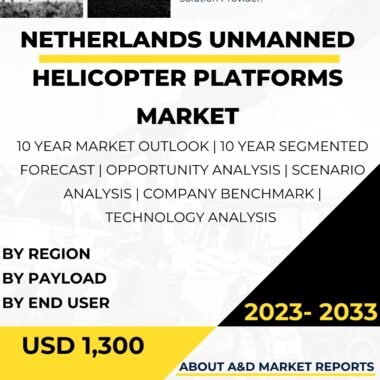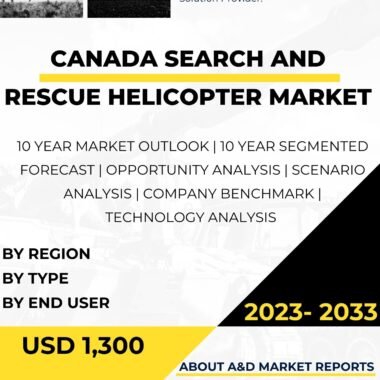Description
Unmanned helicopter platforms, also known as Unmanned Aerial Vehicles (UAVs) or drones, have become a crucial component of Canada’s aviation capabilities. These advanced aerial systems offer versatility, endurance, and efficiency in various military and civilian applications. In Canada, unmanned helicopter platforms have found extensive use in the Canadian Armed Forces (CAF), as well as in civilian sectors such as search and rescue, environmental monitoring, and surveying. This article explores the importance of unmanned helicopter platforms in Canada, their history, types, technology, challenges, and their role in enhancing the country’s military and civilian operations.
The use of unmanned helicopter platforms in Canada dates back to the late 20th century when advancements in aviation and remote control technologies opened up new possibilities for aerial systems. Early unmanned helicopters were primarily used for research and development purposes, exploring the feasibility and potential applications of unmanned flight.
Over time, as the technology matured and demonstrated its capabilities, unmanned helicopter platforms found practical applications in both military and civilian domains. Canada’s interest in unmanned helicopter platforms grew, and research and development efforts were launched to explore their potential benefits in various operational scenarios.
The Canadian Armed Forces adopted unmanned helicopter platforms to augment traditional aerial reconnaissance and surveillance capabilities. These unmanned systems provided real-time situational awareness, enabling commanders to make informed decisions and respond effectively to evolving threats.
Canada’s focus on using unmanned helicopter platforms for military applications intensified during the global war on terror. Unmanned helicopters were deployed in Afghanistan to support reconnaissance, surveillance, target acquisition, and intelligence gathering. These platforms played a critical role in gathering actionable intelligence and contributing to the success of military operations.
In recent years, the CAF has continued to invest in and integrate advanced unmanned helicopter platforms into its operations. These platforms offer extended endurance, sophisticated sensor payloads, and autonomous capabilities, allowing for complex missions without putting human operators at risk.
The use of unmanned helicopter platforms extends beyond military applications. Civilian sectors in Canada have embraced these systems for various purposes, including environmental monitoring, wildlife surveying, wildfire management, search and rescue missions, and infrastructure inspection.
Unmanned helicopter platforms are particularly valuable in remote and inaccessible regions, where conventional aviation operations may be challenging or cost-prohibitive. These platforms offer a cost-effective and efficient means of gathering data and conducting operations in diverse environments.
Some of the prominent unmanned helicopter platforms used in Canada include the Schiebel Camcopter S-100, the Northrop Grumman MQ-8B Fire Scout, and the Airbus H125 FHS.
The Schiebel Camcopter S-100 is a compact and agile unmanned helicopter platform designed for a wide range of military and civilian applications. It can carry various sensor payloads, including electro-optical/Infrared (EO/IR) cameras and radar systems, making it suitable for surveillance, reconnaissance, and environmental monitoring missions.
The Northrop Grumman MQ-8B Fire Scout is a naval unmanned helicopter platform designed to operate from ships. It is equipped with radar and sensor systems, enabling it to support maritime surveillance and intelligence gathering.
The Airbus H125 FHS is a versatile civilian unmanned helicopter platform used for aerial surveying, mapping, and inspection tasks. Its ability to carry different payloads makes it adaptable for a wide range of civilian applications.
Unmanned helicopter platforms are equipped with advanced avionics, flight control systems, and sensor technologies, allowing them to operate autonomously or under remote human control. These platforms use Global Positioning System (GPS) and inertial navigation systems to maintain precise position and navigation during flight.
Payloads carried by unmanned helicopter platforms include EO/IR cameras, radar systems, LIDAR (Light Detection and Ranging), multispectral sensors, and communication equipment. These sensors provide valuable data for intelligence gathering, reconnaissance, environmental monitoring, and disaster response missions.
Autonomous capabilities are essential for unmanned helicopter platforms, enabling them to conduct missions with minimal human intervention. Advanced algorithms and artificial intelligence allow these platforms to plan flight paths, avoid obstacles, and adapt to changing environmental conditions.
Challenges associated with unmanned helicopter platforms include ensuring their safe and reliable operation in various weather conditions and terrains. These platforms must be capable of operating in adverse weather, including strong winds, rain, and low visibility, without compromising mission effectiveness.
To address these challenges, unmanned helicopter platforms undergo rigorous testing and evaluation to ensure their performance and reliability under diverse scenarios. The CAF and civilian operators collaborate with industry partners to develop and integrate robust unmanned systems suitable for Canadian operational requirements.
Another challenge relates to managing airspace integration and regulations. As unmanned helicopter platforms become more prevalent, airspace management becomes crucial to avoid conflicts with manned aviation and ensure the safe and efficient operation of these systems.
Canada is actively engaged in research and development efforts to address these challenges and enhance the capabilities of unmanned helicopter platforms. Investments in technology, training, and regulatory frameworks demonstrate the country’s commitment to leveraging unmanned systems to enhance military and civilian operations.
The CAF prioritizes training and proficiency in operating unmanned helicopter platforms. Personnel involved in the operation and maintenance of these systems undergo specialized training to ensure effective and safe deployment in various operational contexts.
Civilian operators also undergo training and certification processes to operate unmanned helicopter platforms legally and responsibly. Compliance with aviation regulations and safety standards is paramount to ensure safe and ethical use of these systems.




